Copyright
The Klingon Language Institute began in January 1992, with twin goals: to promote and support the study of the Klingon language, and to bring together Klingon language enthusiasts, building a new linguistic community. We believe this book furthers both of these goals. ISBN 0-9644345-6-3 Copyright 1996 by the Klingon Language Institute
Copyright 2017 by the Klingon Language Institute All rights reserved. No part of this book may be reproduced or transmitted in any form or by any means, electronic or mechanical, including photocopy, recording, or any information storage or retrieval system, without permission in writing from the publishers. Klingon Language Institute
P.O.
qo'mey poSmoH Hol
Introduction to the 1996 Chapbook:
As every student of Klingon knows, the warriors' tongue makes use of a great many suffixes for both nouns and verbs.
qo'mey poSmoH Hol
Introduction to the 1996 Chapbook:
As every student of Klingon knows, the warriors' tongue makes use of a great many suffixes for both nouns and verbs.
The verbal suffixes are particularly rich in terms of their variety, their range of categories, and the complexity that easily arises as they build and mix. Indeed Klingon's verb suffixes often give rise to subtle meanings which would be hard to express in English in a brief sentence, let alone a single word as in Klingon. To help you become more comfortable and familiar with these verbal suffixes we have created this ebook. On the following pages each of the verbal suffixes has been applied to the verb stem HoHkill. The accompanying illustrations should make the meaning of each suffix clear and help you to remember them all a bit better. Keep in mind however, this ebook is intended only as a supplement to Marc Okrand's The Klingon Dictionary, and not as a replacement.
Without his work our own small efforts would not even be possible. Some final notes. Most of the suffixes as presented are attached to the bare verb stem; however, a couple suffixes only grammatically exist when paired with another suffix. For further discussion of this topic the reader should consult The Klingon Dictionary. Second, with only a few exceptions, you won't see any prefixes on the verb. Thus the subject and object of HoH are obviously third person, potentially either singular or plural.
Because Klingon is an inclusive language both male and female characters in the illustrations will be taking turns as the subject and object of the action. It is our hope that you will use this guide to strengthen your command of Klingon, and join us in bringing life to this noble language. Lawrence M. Schoen, Ph.D.
KLI Director Gennie Summers
Illustrator
Introduction to the 2017 Ebook:
When the KLI began, there was no world wide web, and when the original version of this book was published, ebooks were still a rarity. Nowadays though, they are as ubiquitous as
qagh on the homeworld. The chapbook has long since been out of print, and so we are happy at long last to bring this valuable resource back in an even more useful and electronic format.
Lawrence M. Schoen, Ph.D.
KLI Director
Type 1 Suffixes
These suffixes indicate that the subject of the verb is also its object, and so are often referred to as "reflexive." There are two Type 1 suffixes:
-chuqone another-'eghoneself-chuqone another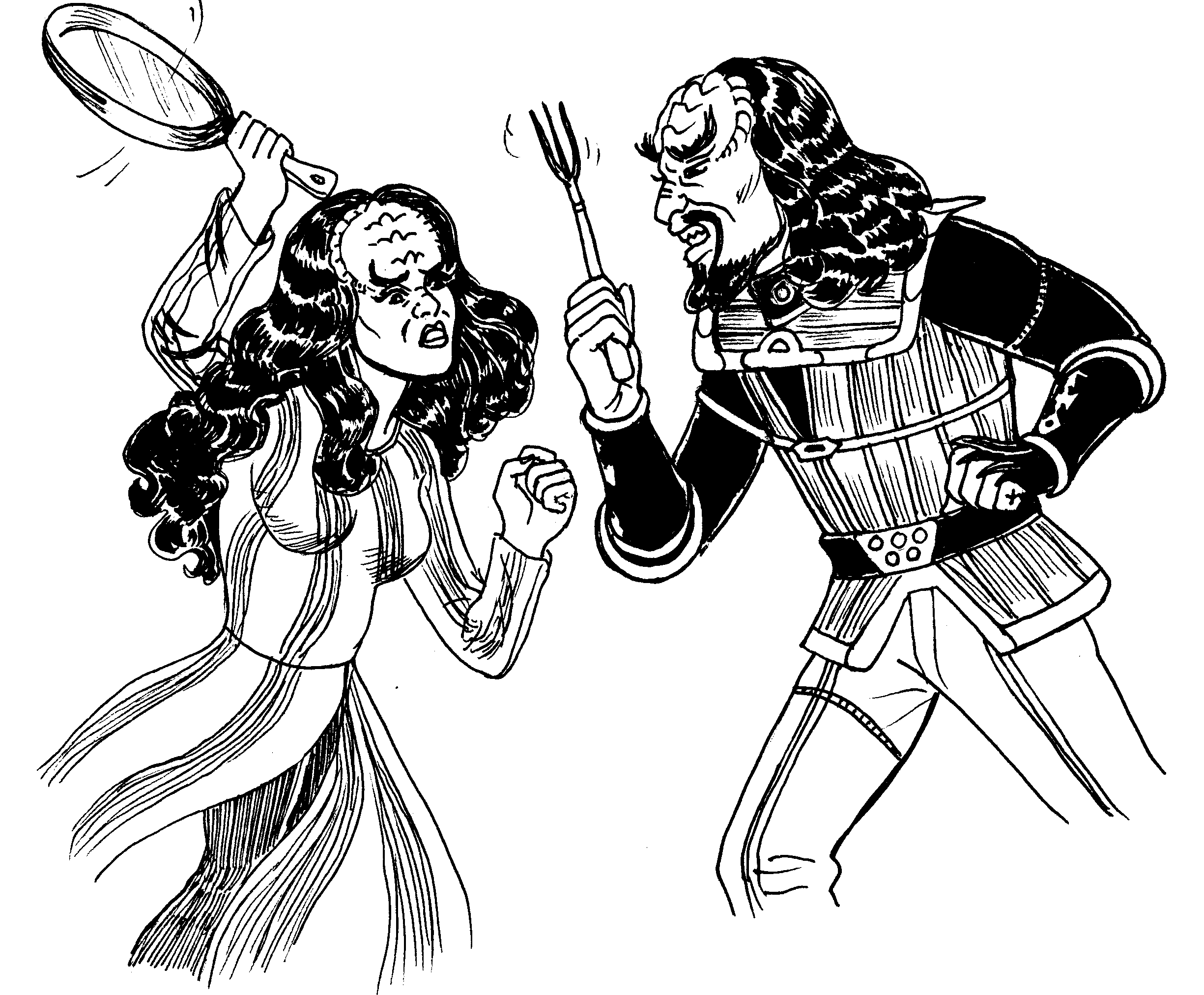 HoHchuqthey kill one another-'eghoneself
HoHchuqthey kill one another-'eghoneself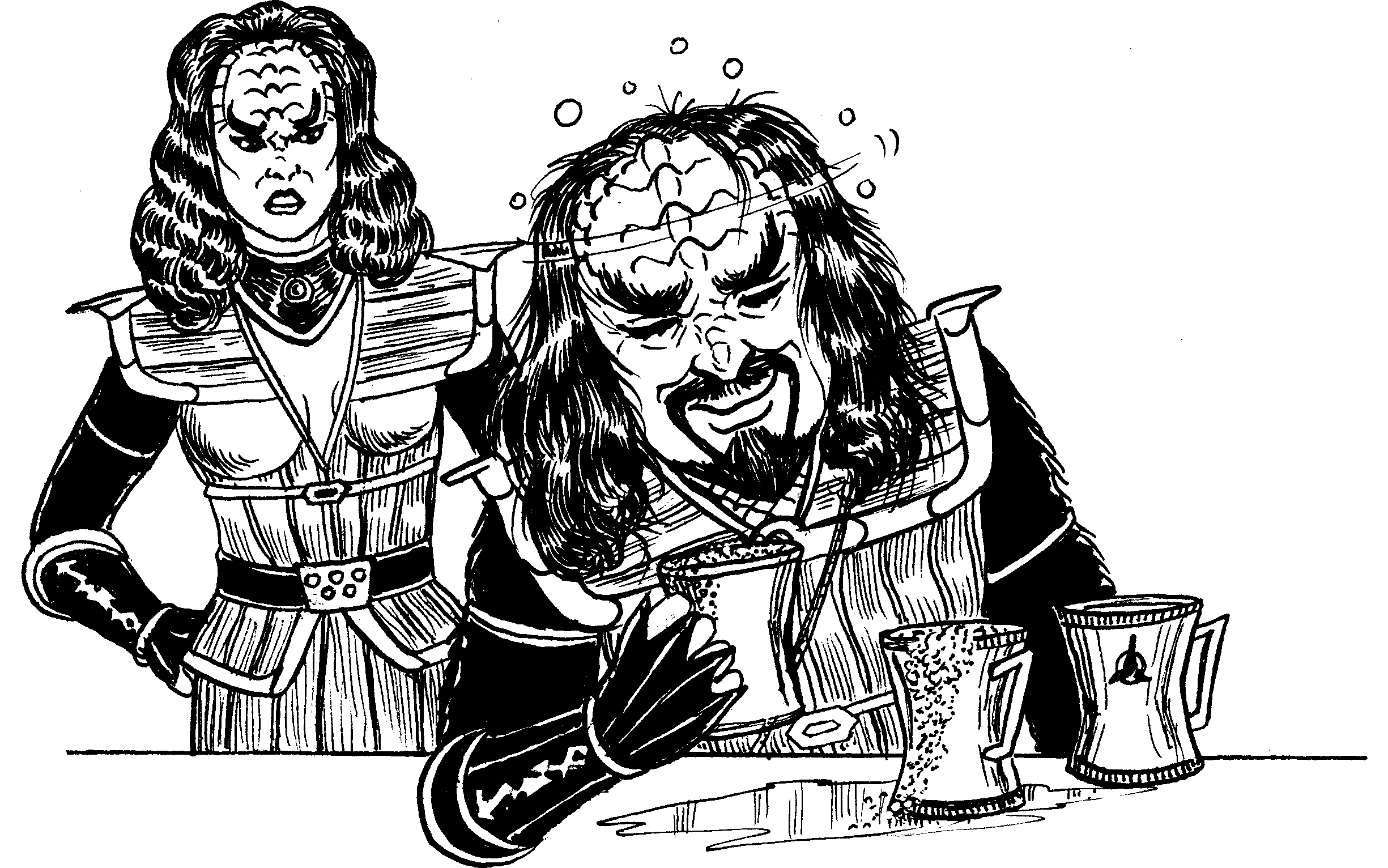 HoH'eghhe kills himself
HoH'eghhe kills himselfType 2 Suffixes
Type 2 suffixes express volition or predisposition. It's worth noting that this suffix Type reveals something interesting about linguistic
gender in Klingon, as seen in the two suffixes that indicate readiness. The first of these,
-beH, is used with devices, where as
-rup is used to indicate the readiness of living beings.
-beHready / set up-nISneed-qangwilling-rupready / prepared-vIpafraid-beHready / set up HoHbeHit is ready to kill-nISneed
HoHbeHit is ready to kill-nISneed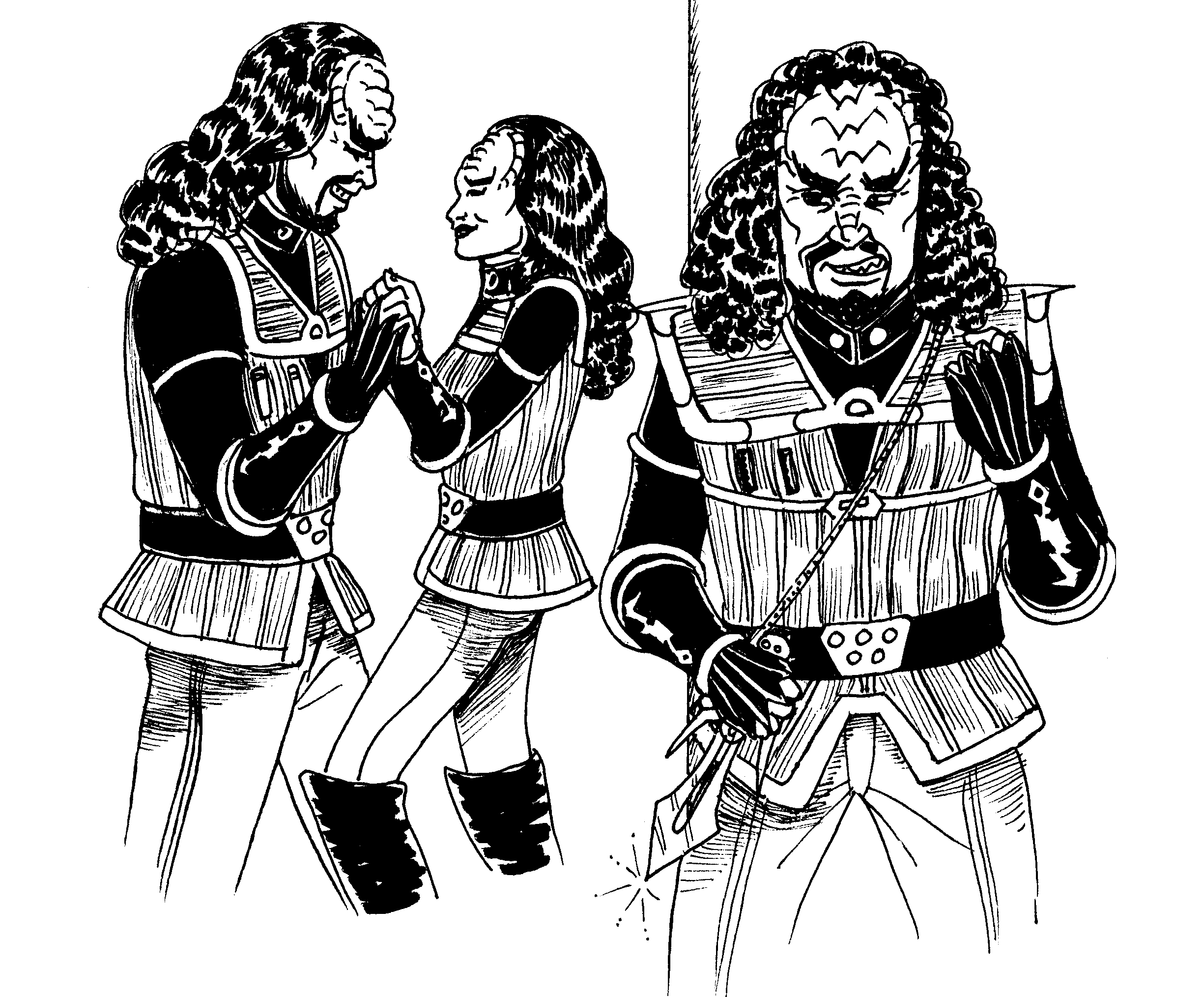 HoHnIShe needs to kill her-qangwilling
HoHnIShe needs to kill her-qangwilling HoHqangshe is willing to kill him-rupready / prepared
HoHqangshe is willing to kill him-rupready / prepared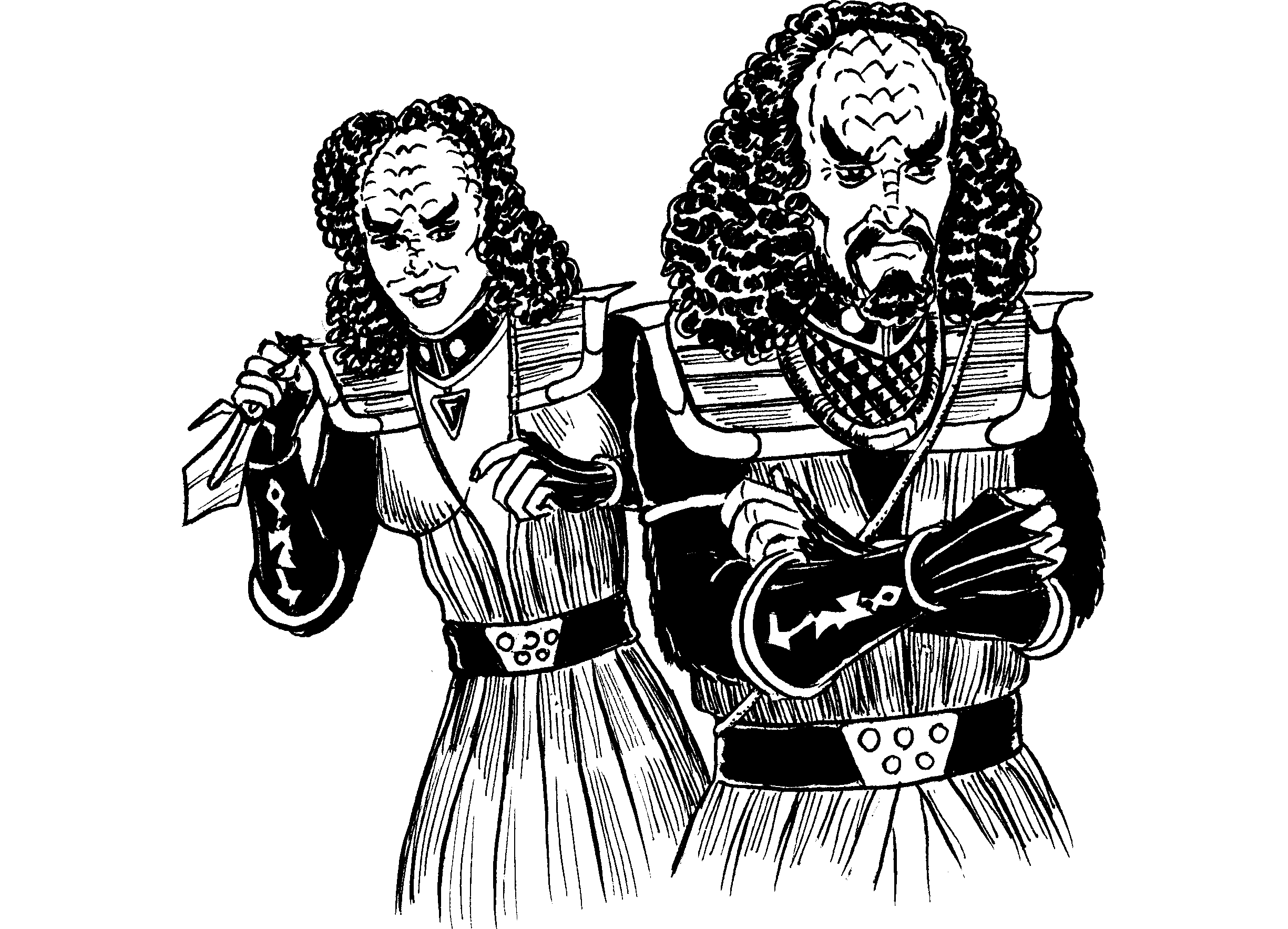 HoHrupshe is ready to kill him-vIpafraid
HoHrupshe is ready to kill him-vIpafraid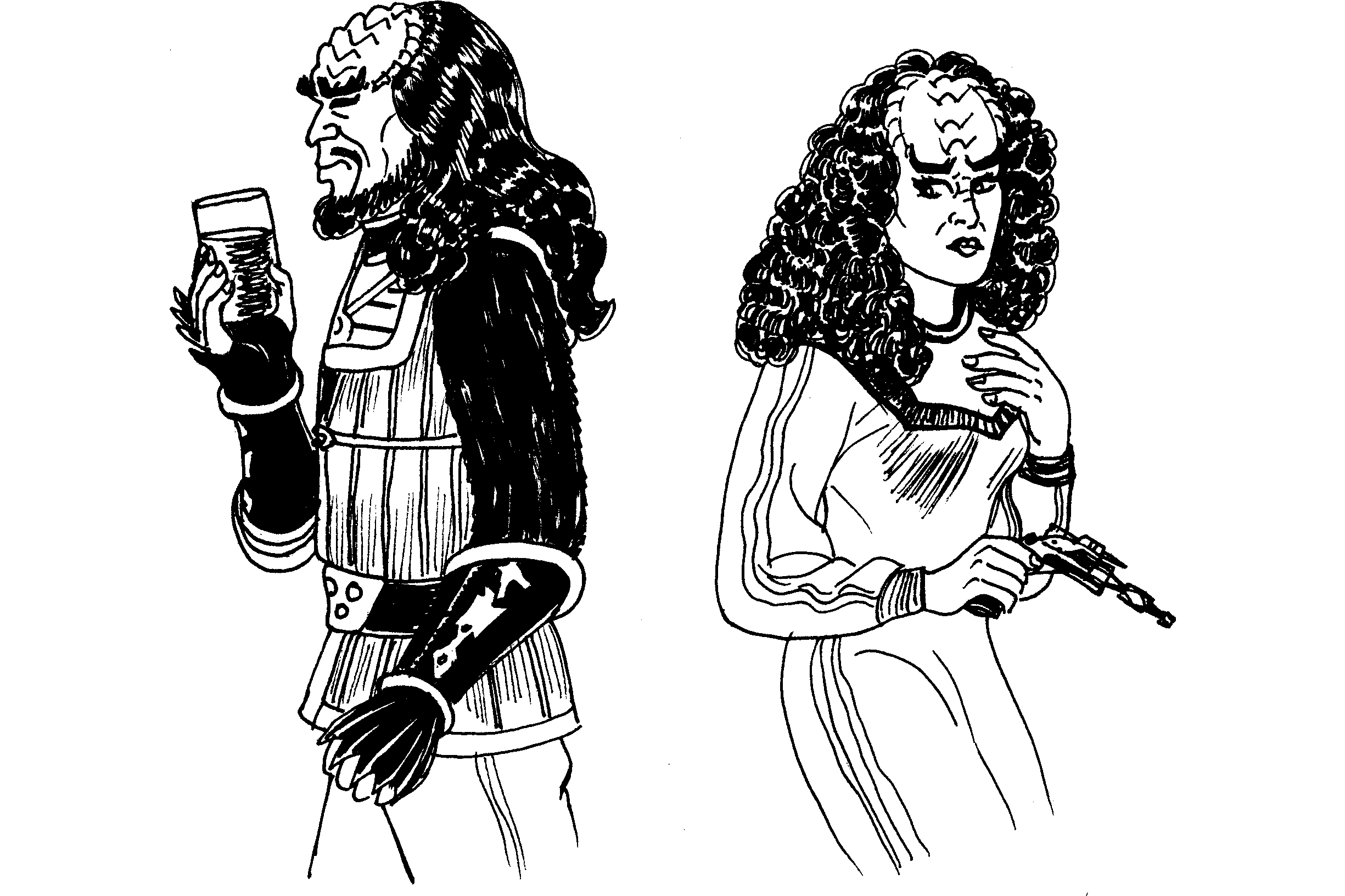 HoHvIpshe is afraid to kill him
HoHvIpshe is afraid to kill himType 3 Suffixes
Type 3 suffixes reveal change, and distinguish between a change in action or state that is just taking place, and one which had happened previously and is reoccurring.
-moHcause-moHcause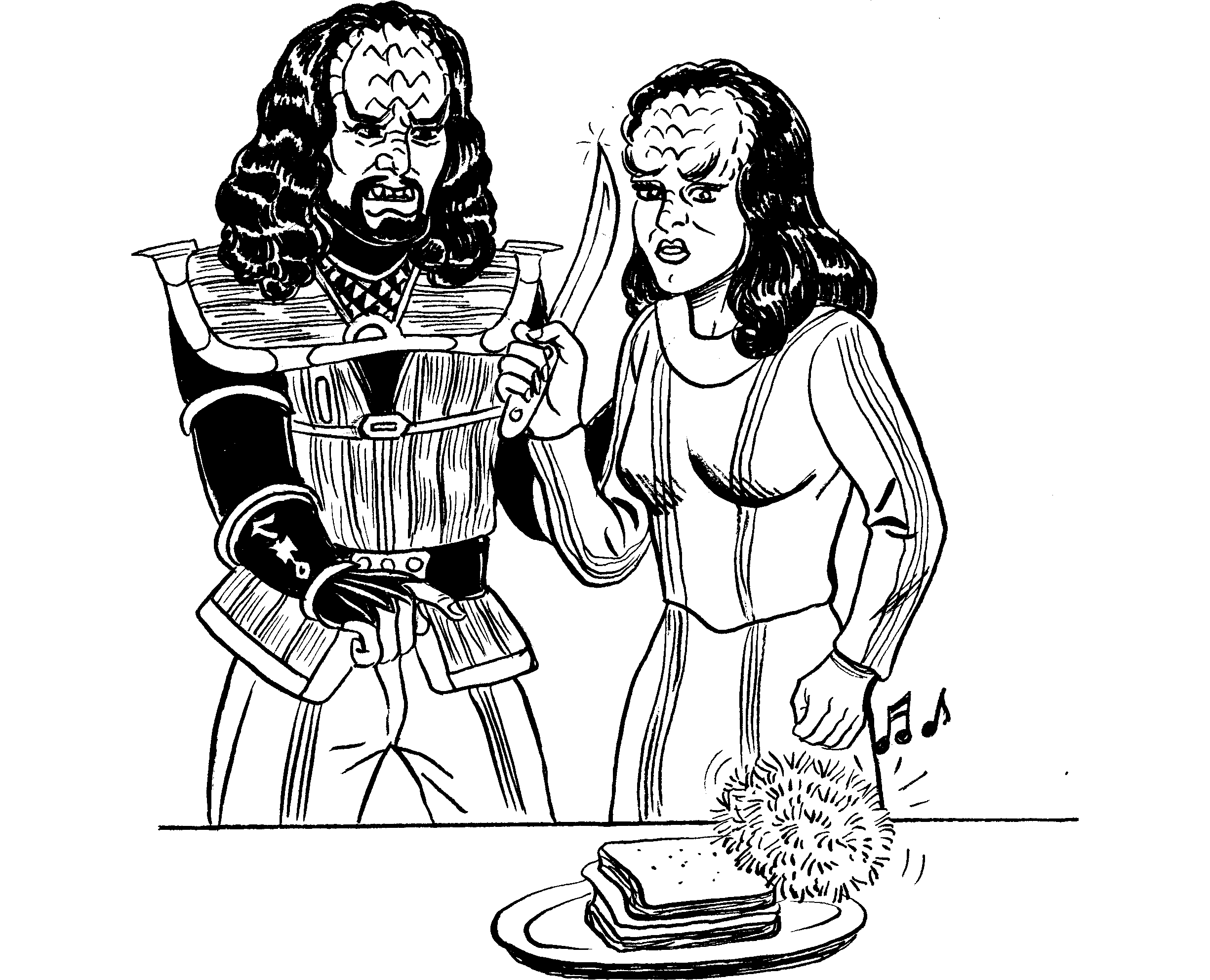 HoHmoHhe causes her to kill
HoHmoHhe causes her to killType 5 Suffixes
The two Type 5 suffixes don't appear to be related.
-moHcause-moHcause HoHmoHhe causes her to kill
HoHmoHhe causes her to killType 5 Suffixes
The two Type 5 suffixes don't appear to be related.
One indicates that the subject is capable of the verb's action or state, while the other marks the sentence as having an indefinite subject. However, because no verb may take more than one suffix of the same type, it's not possible to have a verb whose subject is both capable of the action/state and indefinite. -laHcan / able-lu'indefinite subject-laHcan / able HoHlaH
HoHlaH
he can kill her-lu'indefinite subject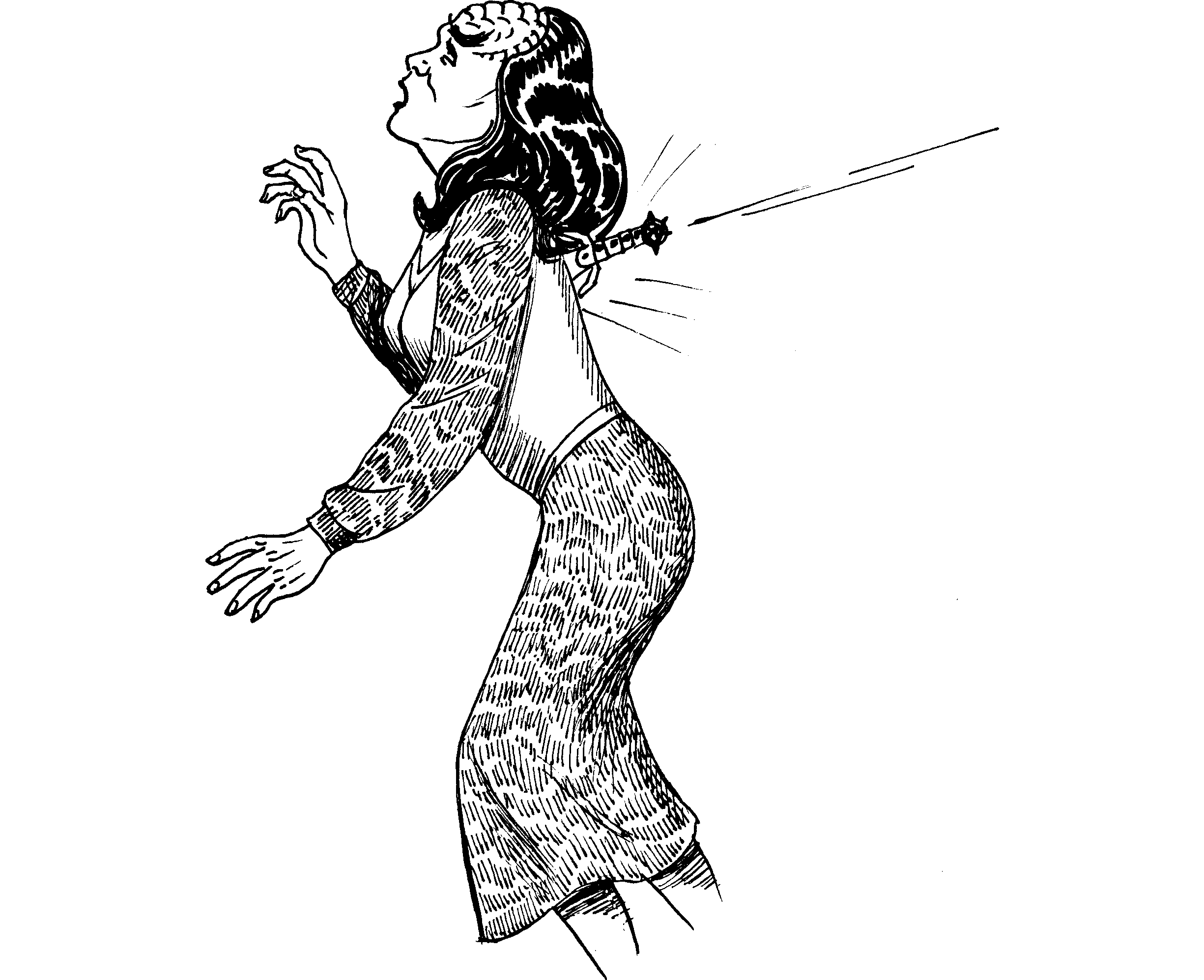 HoHlu'
HoHlu'
she is killed
Type 6 Suffixes
Type 6 suffixes reflect the confidence the speaker has about the action or state of the verb's subject. These suffixes lend a sense of "quality" to the verb and a subtlety that is often lost in translation.

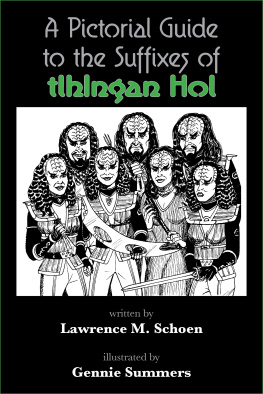

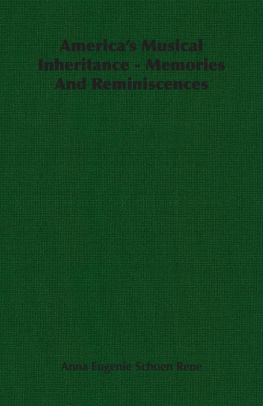





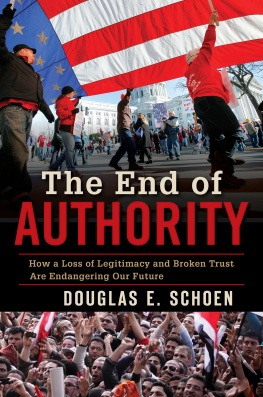



 HoHchuq
HoHchuq HoH'egh
HoH'egh HoHbeH
HoHbeH HoHnIS
HoHnIS HoHqang
HoHqang HoHrup
HoHrup HoHvIp
HoHvIp HoHmoH
HoHmoH HoHlaH
HoHlaH HoHlu'
HoHlu'